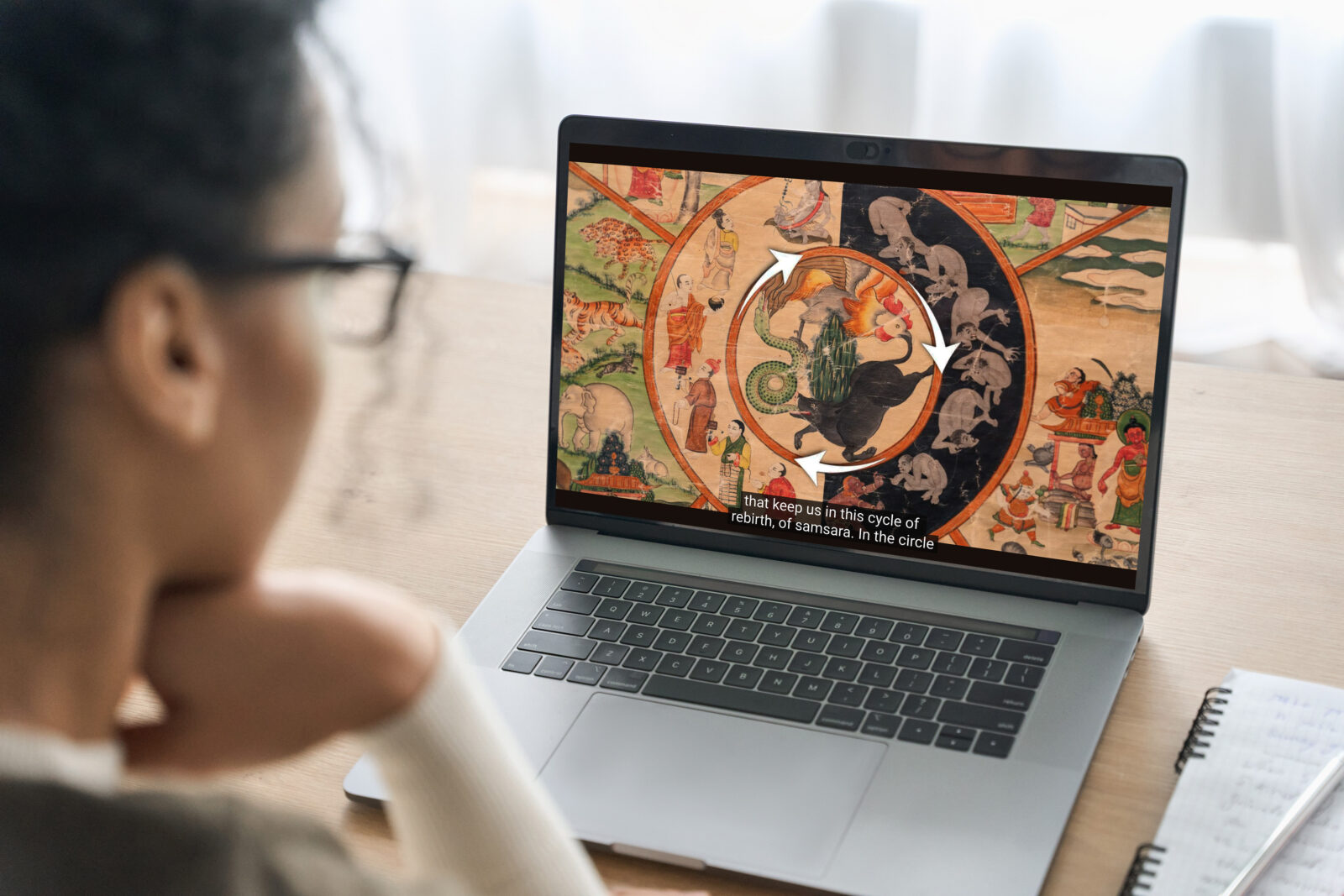

The Rubin Museum of Art has launched Himalayan Art Up Close, a new video series in collaboration with Smarthistory, the award-winning digital platform of public art history for students, professors, and learners and the most-visited art history resource in the world. This series begins with eight new videos highlighting select objects from the Rubin’s preeminent collection of Himalayan art and features Rubin curators Karl Debreczeny and Elena Pakhoutova in dialogue with Smarthistory’s art historians Beth Harris and Steven Zucker. Himalayan Art Up Close is an accessible and engaging online introduction to the art and material culture of the Tibetan, Himalayan, and Inner Asian regions for students, art enthusiasts, and learners across the globe.
Viewers can explore the cyclical nature of life, death, and rebirth, known as samsara, through a thangka painting of the Wheel of Life; examine a sculpture of Mahakala, one of the eight great wrathful dharma protectors in Vajrayana Buddhism; learn about the life of Situ Panchen, an esteemed scholar and polymath of the 18th century; and discover how the symbolic composition of a handheld prayer wheel is activated through ritual practice.
Many of the highlighted objects are featured in the Museum’s traveling exhibition Gateway to Himalayan Art, which is currently on view at the Harn Museum of Art at the University of Florida and will travel to universities in Ohio, Utah, Oregon, and California through 2026. Gateway to Himalayan Art is a component of Project Himalayan Art, the Rubin’s three part initiative—encompassing a digital platform, publication, and traveling exhibition—designed to support the advancement and inclusion of Himalayan, Tibetan, and Inner Asian art and cultures into undergraduate teaching on Asia.
The Project Himalayan Art multiyear campaign is underway and the supporter list is in formation.
Get the latest news and stories from the Rubin, plus occasional information on how to support our work.